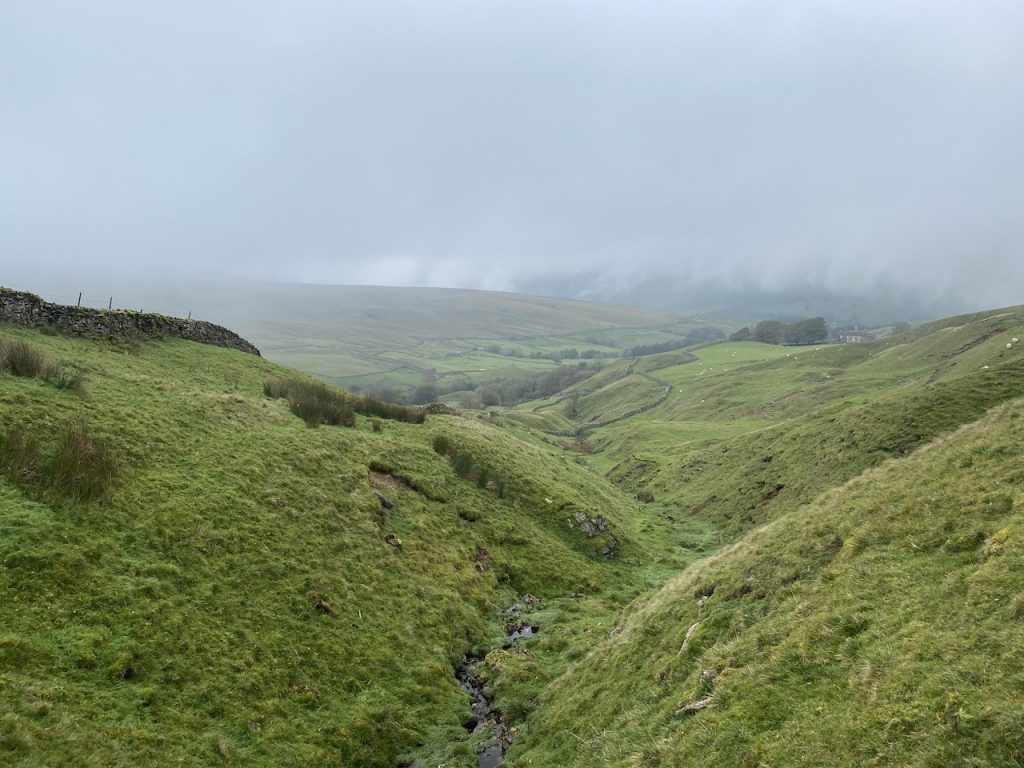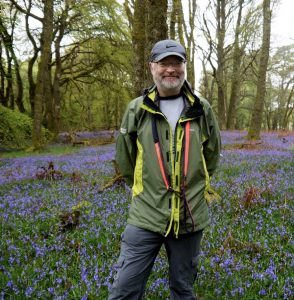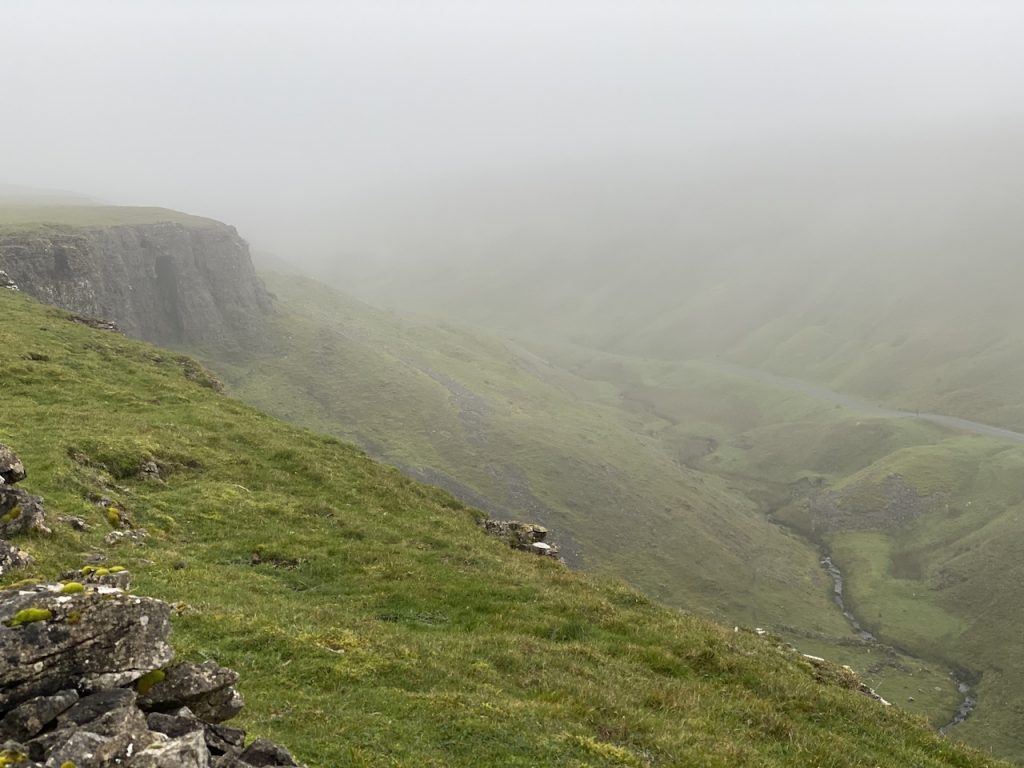
That doesn’t sound particularly promising, does it? But I enjoyed it. The old adage is that good sailors are not made by smooth seas. And the philosophers suggest that enjoyment is perhaps heightened with a wee dash of adversity thrown into the mix. Certainly, the pain of the latter does seem to fade as the memory of the former blooms.
Our plan had been to continue southwards from the end of the Eden Way at Garsdale, to hook up with the Dales Way, which would carry us through the Dales. But we were dealt a middling hand at the outset, and what cards I had, I played poorly. But that said: I now know where to find my car’s towing hook; I had a steak and ale pie that will be the one by which all others will be measured; Storm Babet kicked our plans in to touch but made the waterfalls impressive; I saw Swaledale sheep in Swaledale; walked in Wensleydale and ate Wensleydale cheese; we crossed moor and dale in sunshine and mist; and trod parts of the Dales Way, Ribble Way, Three Peaks trail, Pennine Journey, Pennine Way and Pennine Bridleway.
Day 1: Garsdale to Gearstones
The idea was to pick up from the end of our Eden Way walk at Garsdale Station and walk south to join the Dales Way. The first mile or so was a steep(ish) walk up the single track road to Cowgill Head. With better weather we would have been afforded views into the Mallerstang and Ure valleys but instead we walked into low cloud.
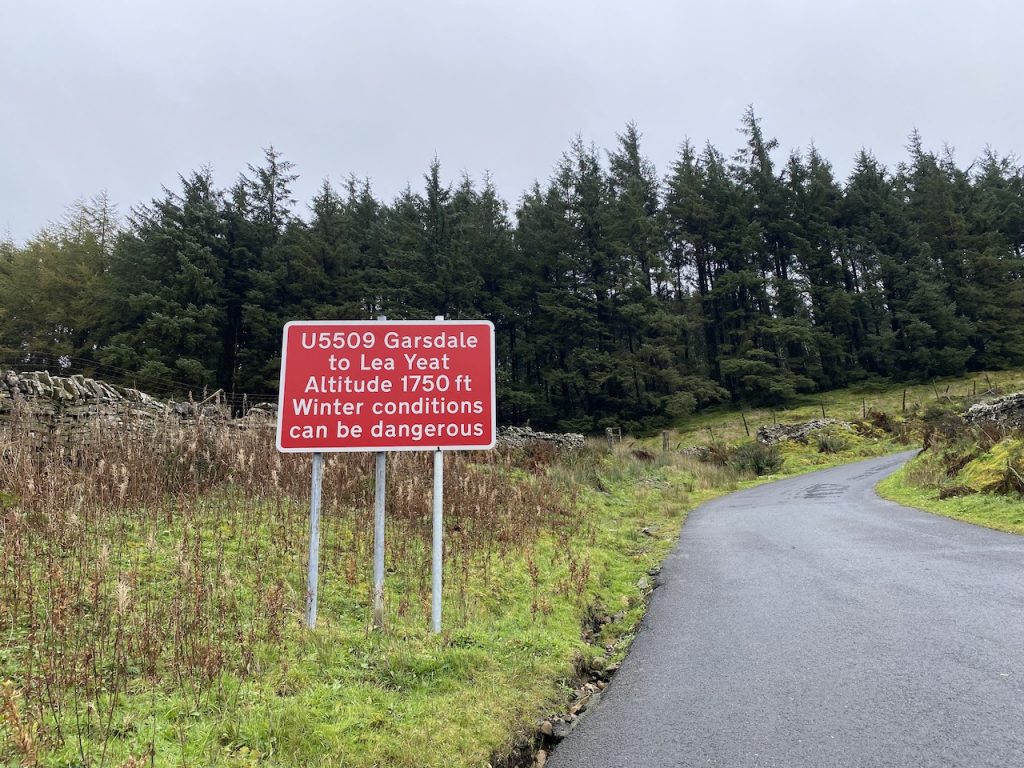
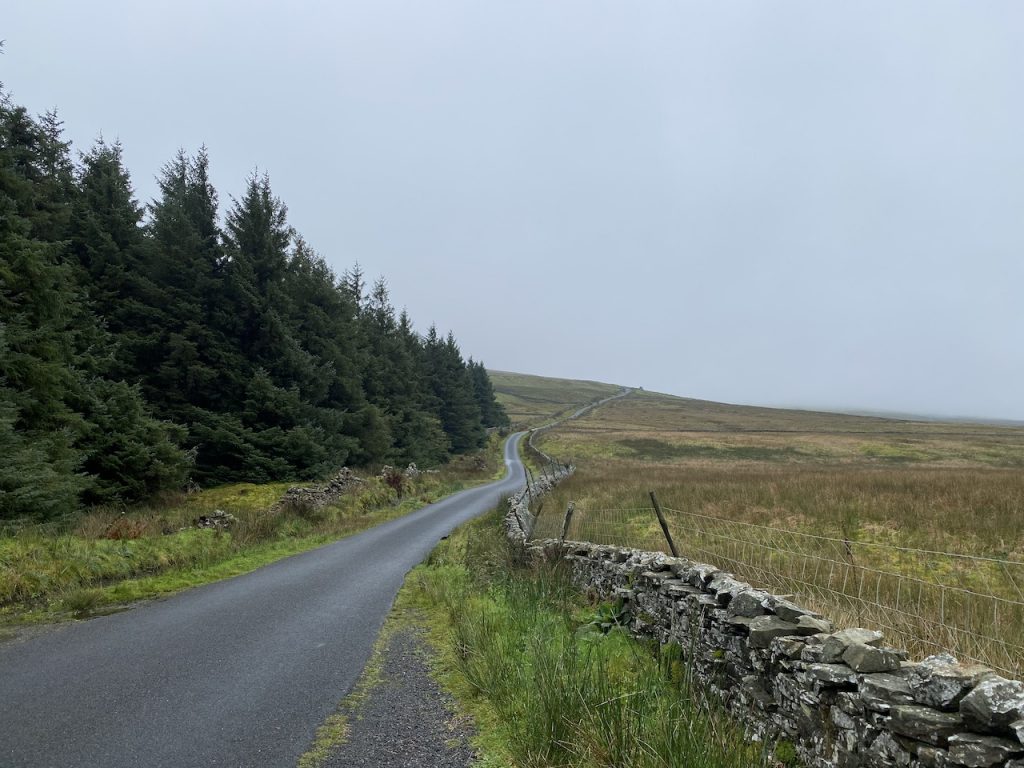
It was a bit chilly but with the climb we soon warmed up. The road is part of the Pennine Bridleway, something we would meet again over the next few days.
By the time we were above 500m, we were well into the clouds and what had been the occasional raindrops became more persistent and heavier rain. By the time we reached Cowgill Beck we had to stop and don foul weather gear. [edit: auto-correct really doesn’t like “Cowgill”, preferring “Cowgirl” – not a word I have much cause to use.]
The OS map names this route “Galloway Gate” and this possible reasons for this were one our our topics of discussion as we trod the tarmac (or stepped aside to allow the TESCO van to pass). “Gate” is easy enough. Both of us grew up where old roads were named gate, from the old norse word, Gata. But what did Galloway have to do with it? The stone dykes beside the road were not Galloway Dykes. So was this a road to Galloway? Once the bridleway left the road it looked very much a drove road with stone dykes either side. Some internet sites claim it was an ancient route to Galloway- but it seemed unlikely. A little more googling has uncovered another possibility.

They were said to have “good looks, a wide, deep chest and a tendency to pace rather than trot.” Though originally bred in Galloway, they were used across Scotland and Northern England. They were certainly being used in Swaledale in the 18th century. The word “galloway”, for a horse (1584), is older in print than “pony” (1659). The breed must have been known in London in 1597 since Shakespeare mentions them Henry IV. “Thrust him down stairs! know we not Galloway nags?”. For more information click on Galloways and Fell Galloways as native utility horses.
The OS map shows several disused coal pits on Cowgill Head and where the road turns down towards Dent it is called the Coal Road. So I suspect that the road’s name reflects its use by Galloway fell ponies carrying coal.
Anyway, back to the walk. I didn’t take any photos on Cowgill Head what with the rain. But it was typical moorland, with stone dykes in the middle of nowhere and scattered shake-holes to remind us that we were in limestone country. There were sheep scattered about and I even spotted a rabbit. Definitely not a hare.
The modern road turns down towards Lea Year while the bridleway leaves the tarmac for a walled grassy path reminiscent of a drove road. This junction is labelled Monkey Corner in the Dales’s Way book. Presumably from the nearby Monkey Beck. I read that ‘monkey’ was a local term for a hare but I can’t find any explanation for this. As an aside, my ‘researches’ turned up the term “a monkey’s birthday” meaning simultaneous rain and sunshine.
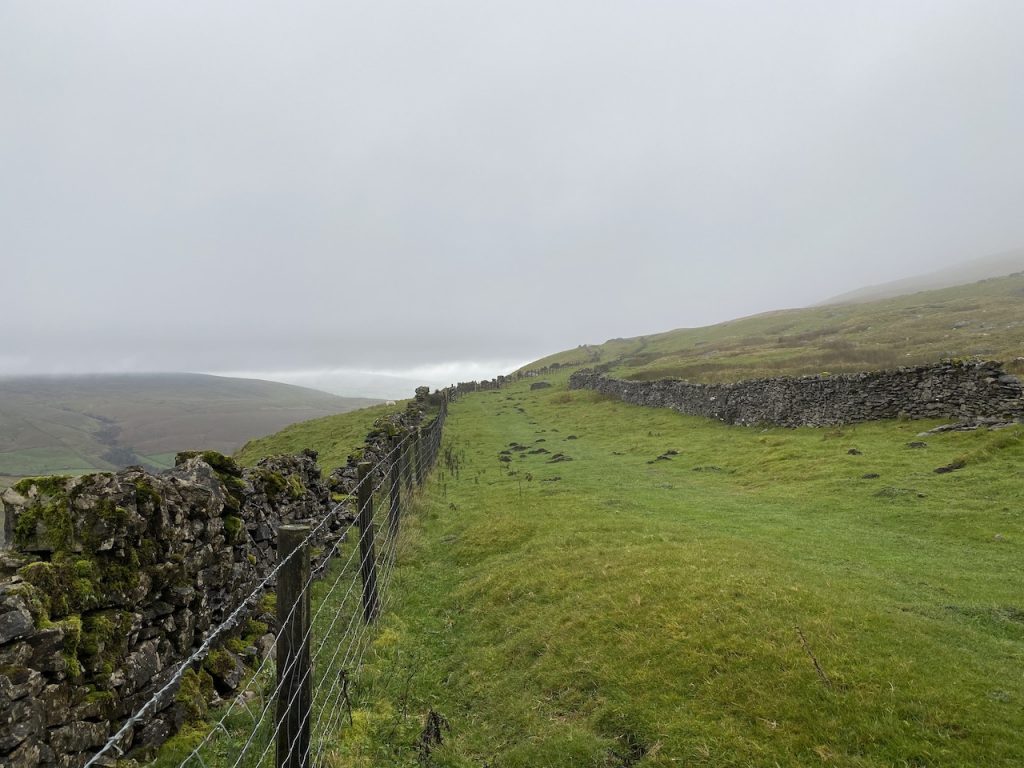
The climbing had eased by here and we mostly continued along the 500m contour. The Dales Way book we had showed one of its alternate routes coming up the Coal Road form Dent to Monkey Shoulder so that was where we joined the Dales Way, two and a half miles into our walk.
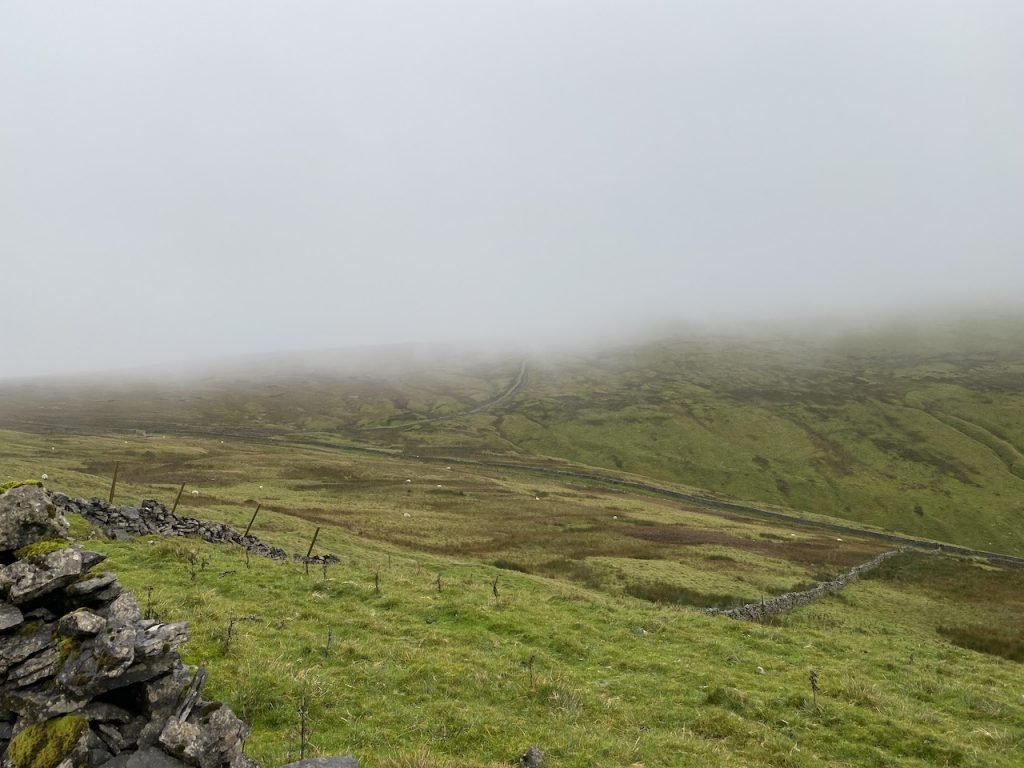
Artengill Beck was a bit of a dip but before the drove road turned to cross it there were several boulders. These looked as if they might have been placed to dissuade vehicles from entering the track but they were probably here long before the drove road. They were probably before the moorland, never mind the drove road. But we put them to use as seats for lunch, the walls giving us a little shelter.
Our route then took us across Artengill Beck, which was trickling over its combined bridge/paved ford. The track took us over the eastern shoulder of Wold Fell, another of those twice named hills, a wold being a flattish hill. Visibility remained poor but we did see some limestone outcrops and occasional glimpses of more distant dales, where the sun was shining. As the week wore on I had cause to wonder if the is a word to describe “being in a dull overcast place but able to see sunlit slopes a couple of miles away”.
This brought us to what i was calling “Newby Head Road”, but as I would later find is the “Dent Road”. It was strangely pristine with what looked like 20 cm of pretty new tarmac. Not a pot hole to be seen. I didn’t know it but I would be back.
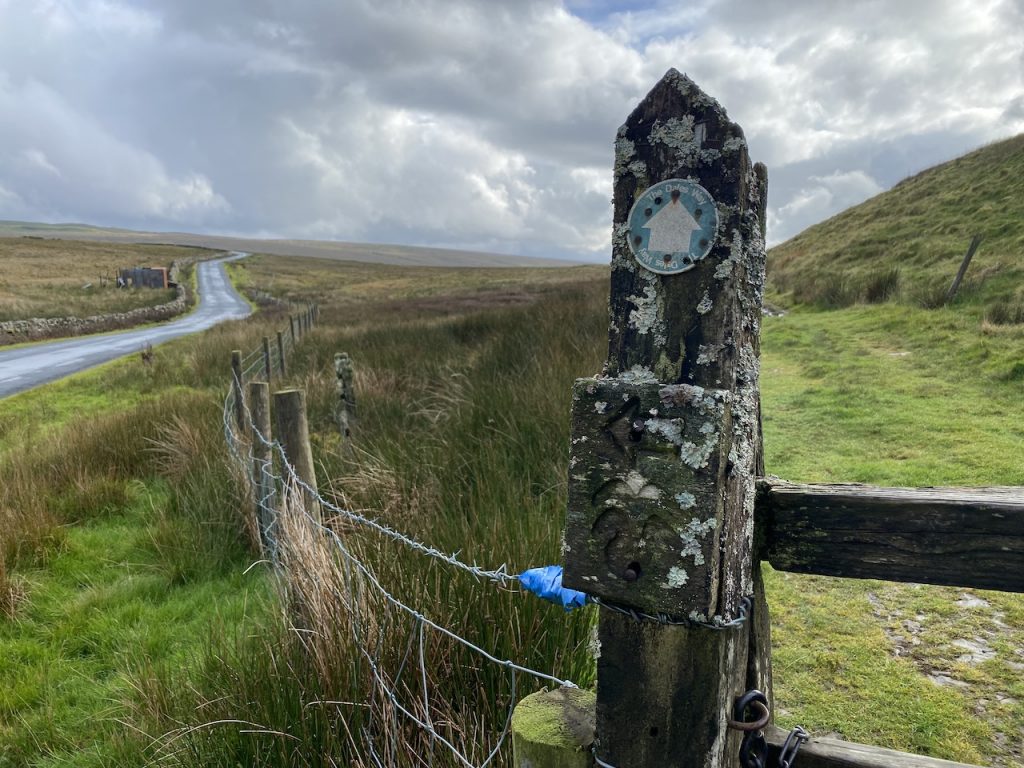
We trudged up the fine tarmac for half a kilometre to pick up the Black Rake Road, a public bridleway unsuitable for vehicles according to the sign – no shit, Sherlock. Other signs told us that we were now walking both the Ribble Way and the Dales Way and that the bridleway led to the B6255 (one and three quarter miles away). A rather dilapidated caravan sat just along the track suggesting that workmen had been here but why we could not tell.

The rain had stopped by now, and we even occasionally had a minute or two of sunshine. But the fates, having drenched us from above, now turned their attention to wetting our feet. The Dent road marked a noticeable change in terrain. I suspect Blea Moor sits on granite rather than limestone. It was much more like the sodden Galloway uplands we know and love. Water doesn’t easily drain away and there was even a lochan (sorry, tarn). We spotted a couple of grouse butts but the only bird we saw looked more like a pheasant.
This was once the main route between Dent and the Turnpike (now the B6255) and older maps show the Black Rake Road as the Old Raky Road. “Rake” comes from the Old Norse, rák, meaning a track or path but has come to mean a rough path in hilly landscape. It is now sometimes applied the pasture ground reached by such a path . Why it has been named “Black” I don’t know.
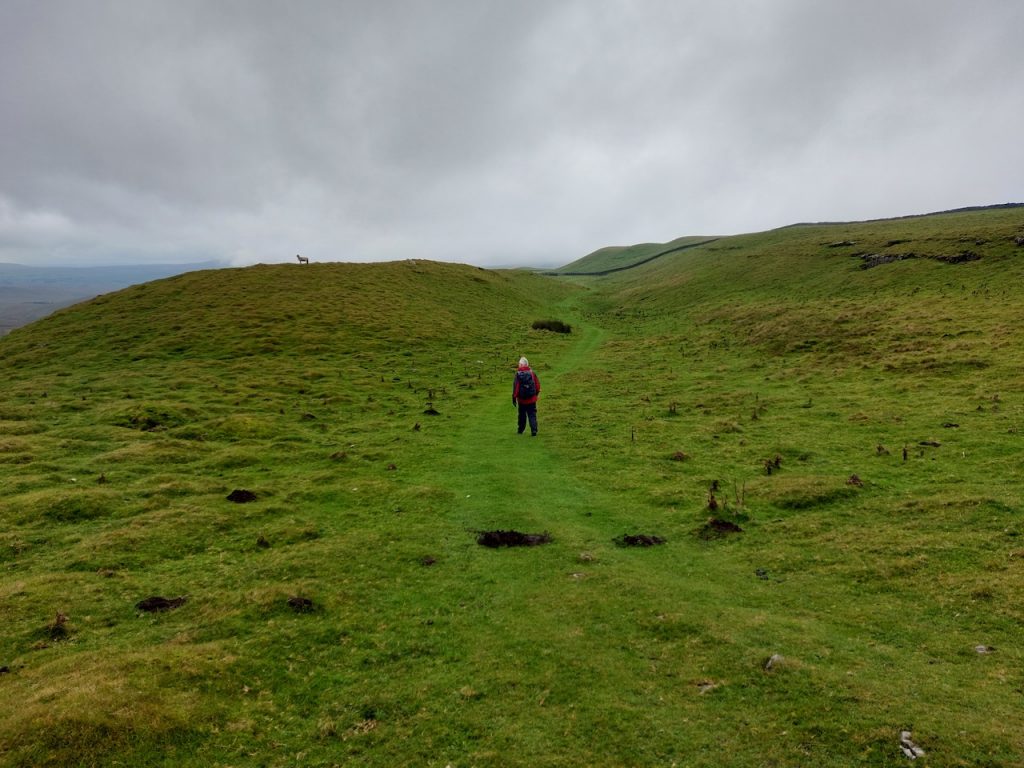
We trudged on. We might have had muddy boots but there wasn’t far to go. What we didn’t know was that in 1795 a new road had been constructed, joining the Old Raky at High Gayle with the Turnpike (B6255) near Intack. Following this the Black Rake Road between High Gayle and Gearstones had been abandoned/not maintained. You would be surprised how much of a difference that has made.
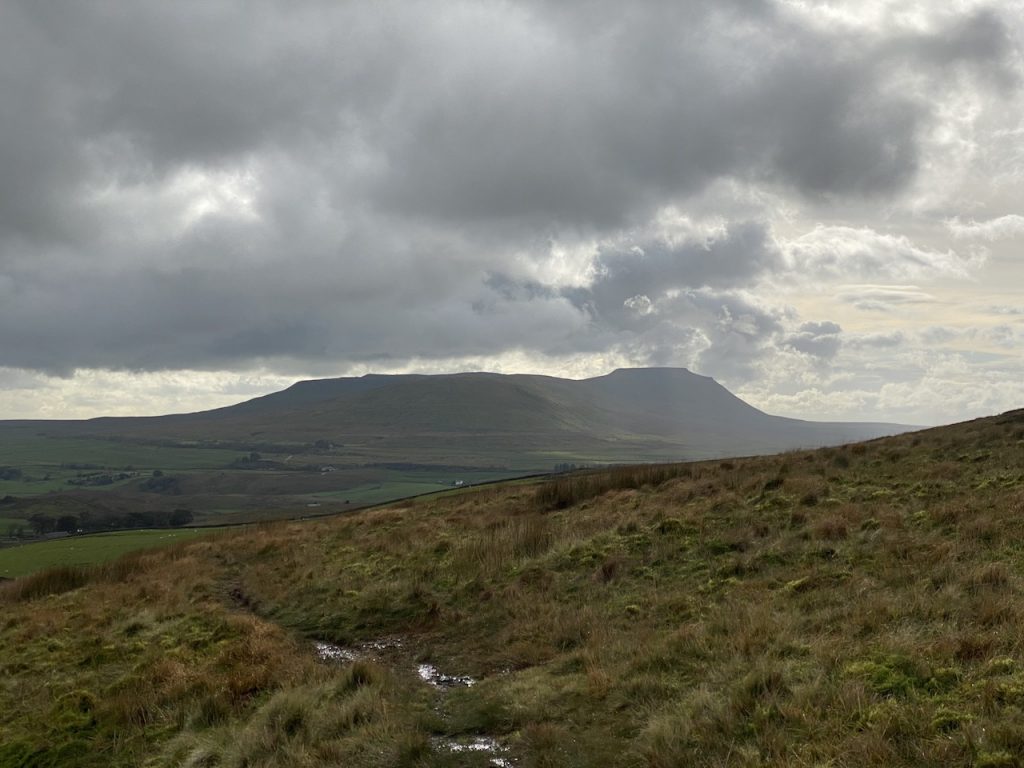
Between High Gayle and Winshaw the Black Rake Road is lost. A narrow walked track winds its way over the boogy moorland, dipping down and up and leaving you to cross several small streams. During one descent the mud got the better of Audrey, who underwent a sudden non-volitional positional adjustment.
A dose of morale booster had to be dispensed before we could continue (and jump a stream).
The house at Winshaw got us back on a vehicle track and it wasn’t long before we could see the car.
A great time was had by all. My coffee had remained hot in its flask. We had found a seat for lunch. And we had walked from the Eden Way to the Dales Way.
Garsdale Station to Gearstones: 9.15 miles 4h 54m ascent 337m
Day 2: Babet and the Amber Rain
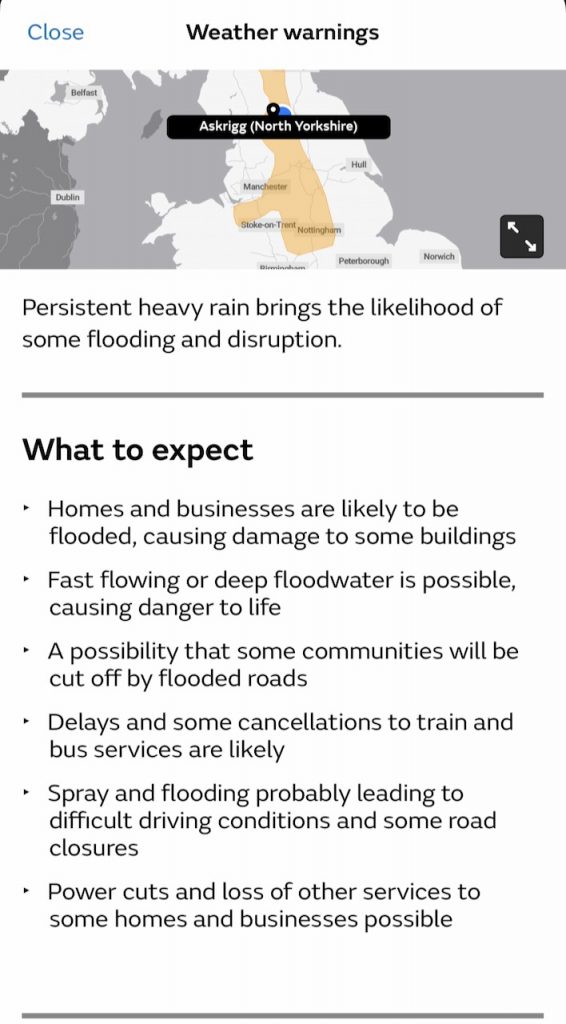
Babet visited the Koninklijk Nederlands Meteorologisch Instituut during one of their open days and saw they were asking for suggestions to help them name storms. Since she had been born during a storm she put her own name forward. Storm Babet arrived on our second day with an amber warning for heavy rain.
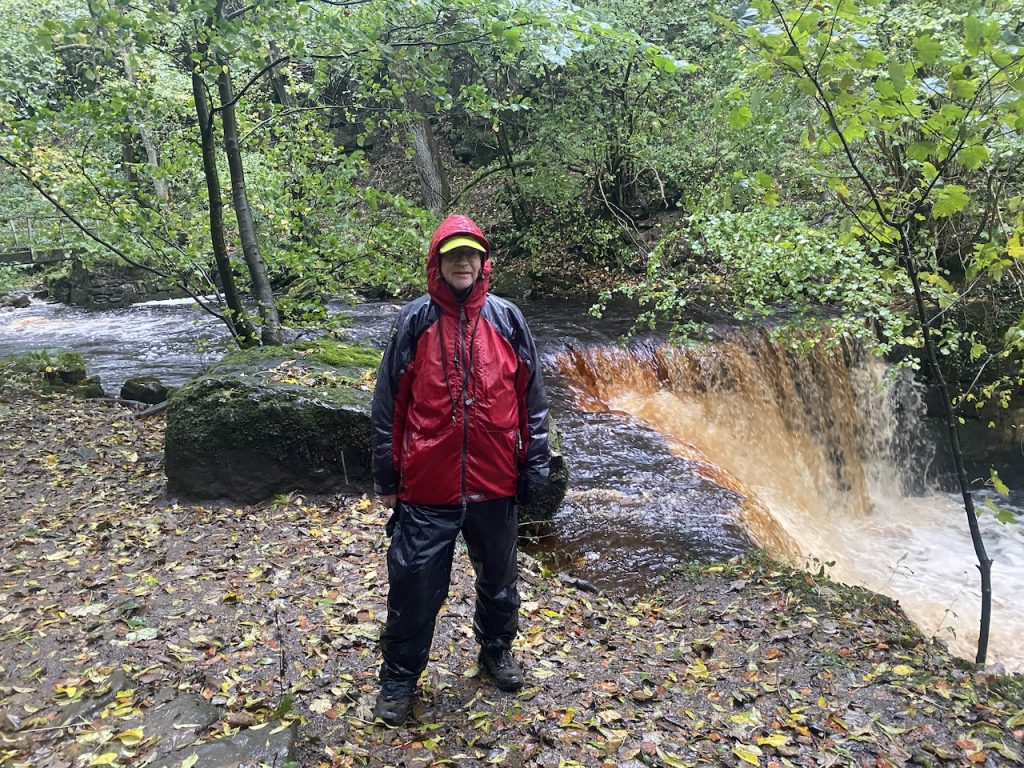
Our planned next stage involved crossing several becks, some at fords as well as quite a few miles of driving on low lying roads which sounded as though it might be a little reckless. So we
to be continued….
Day 3: Finding the Source of the Ribble
A day pulled from the mud of Newby Head Moss
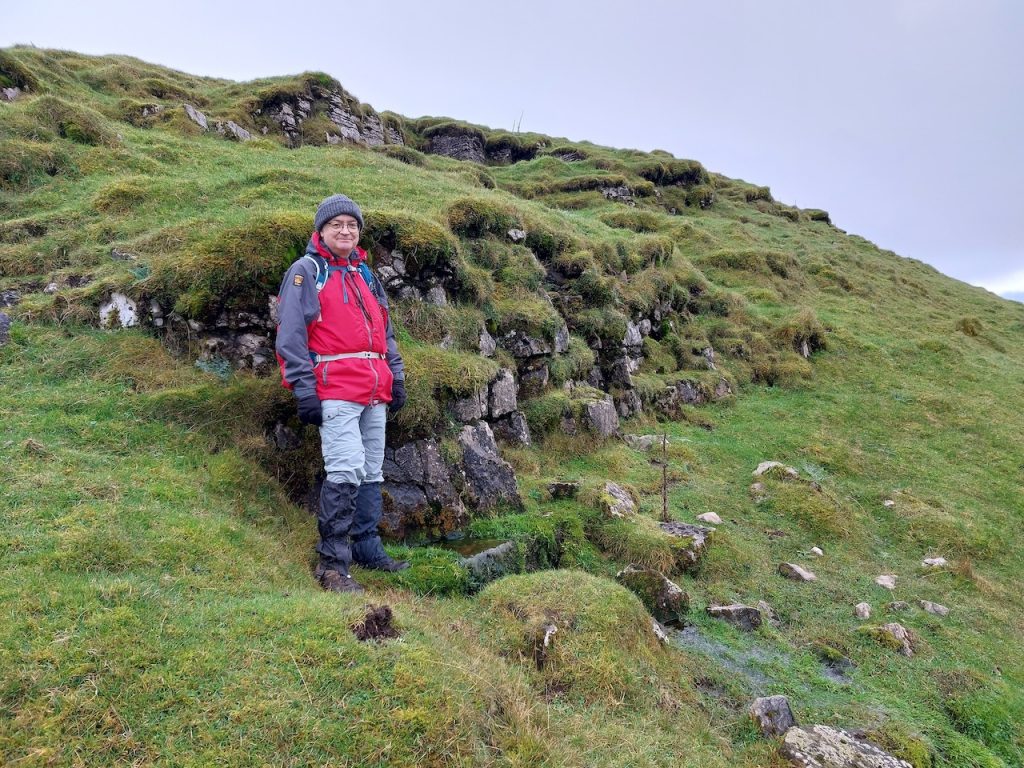
Day 4: Gearstones to Horton – Ribble Way
Ribble Way, a bit of Three Peaks and a bit of Pennine Way
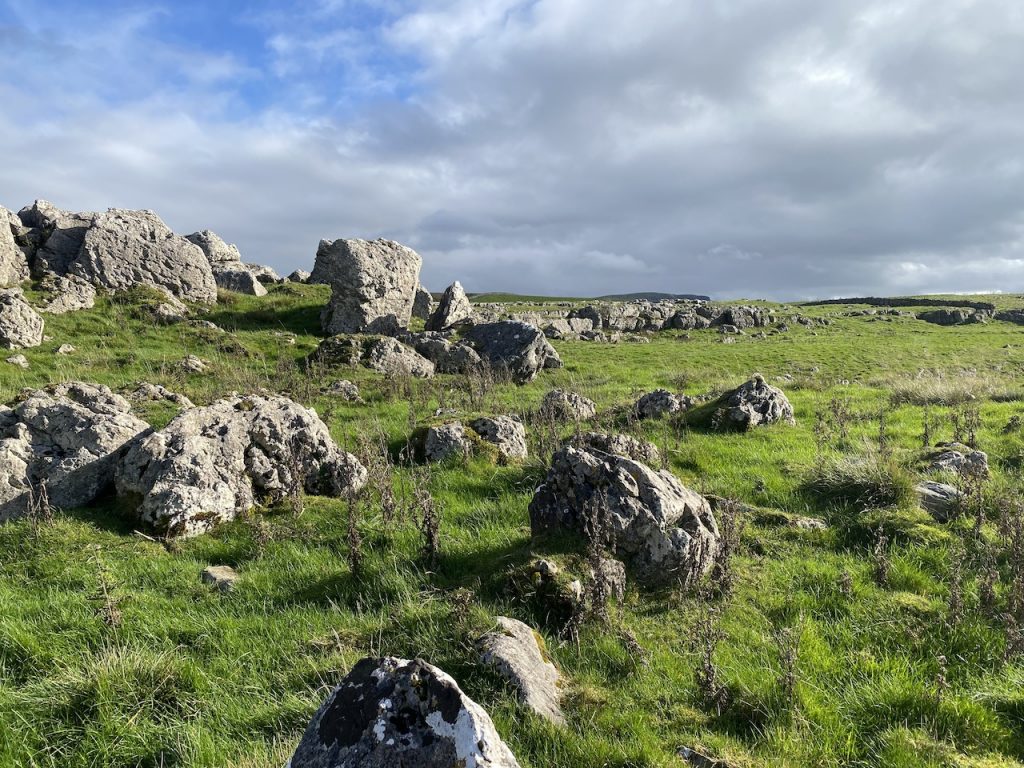
Day 5: Askrigg Common
Gunnerside to Askrigg (Pennine Journey route)
